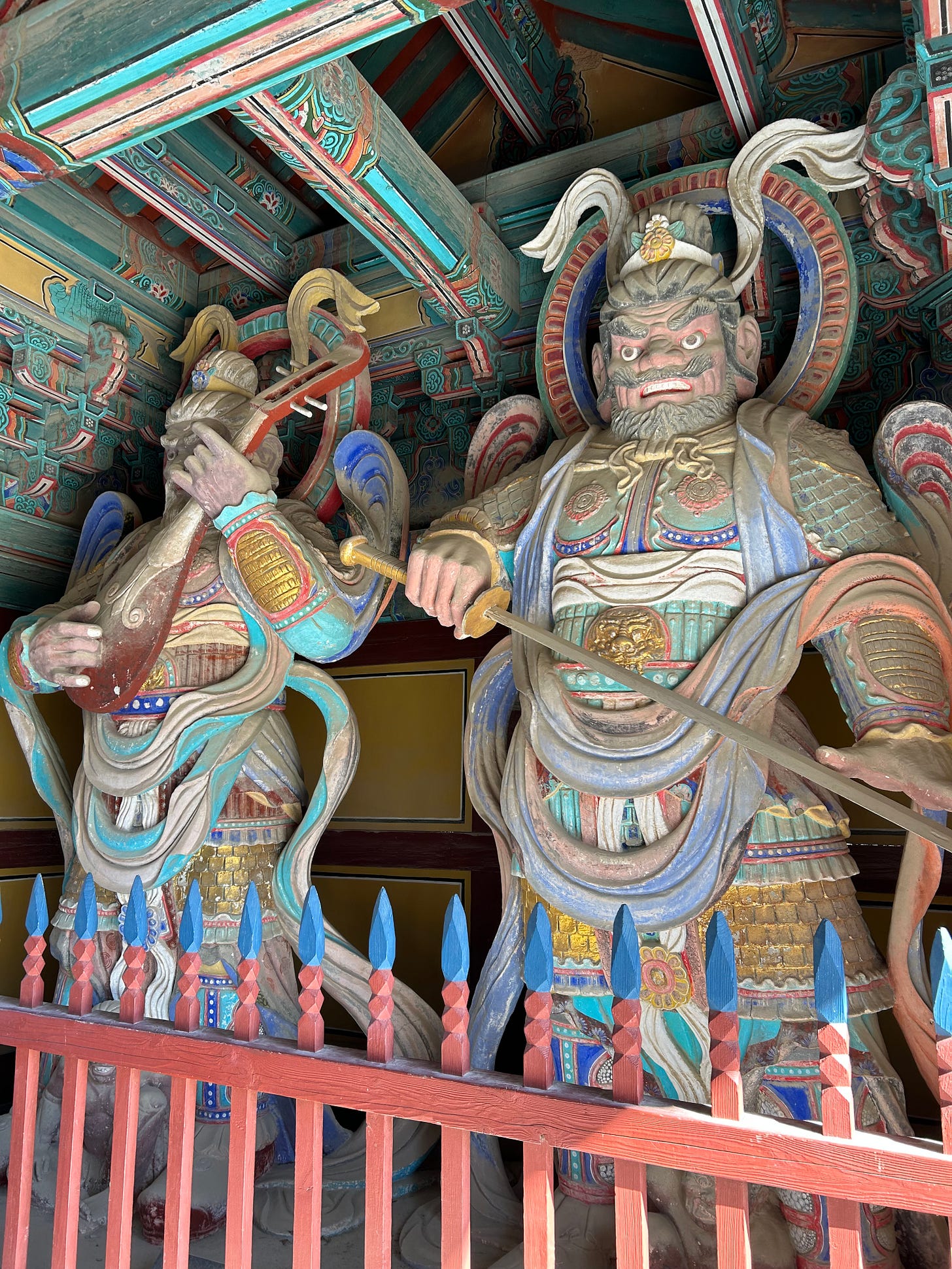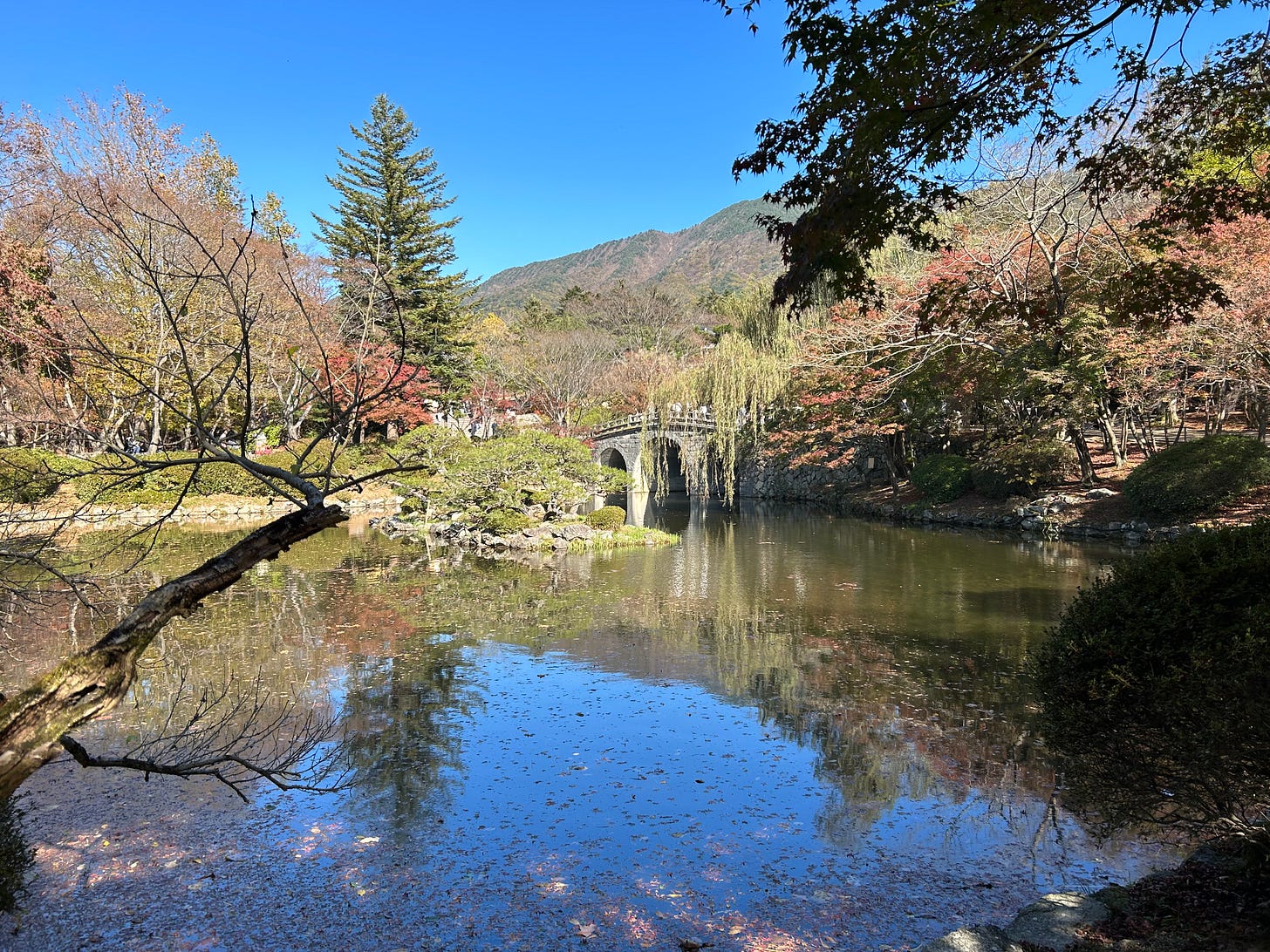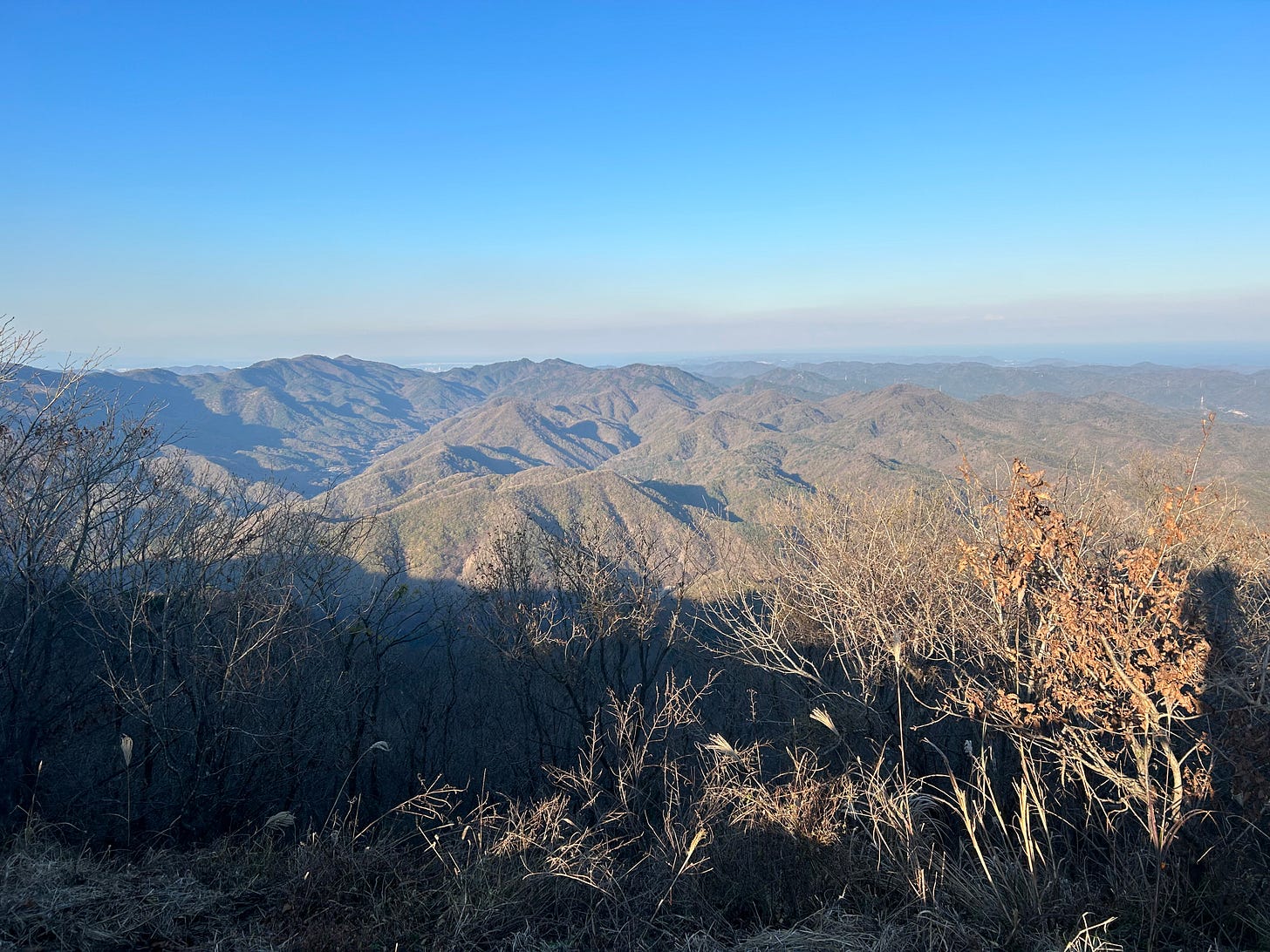Part Twelve: Subeesu, Dokdo, and Pepero
October 13th, 2023
I just had one of my best dinners in Korea.
It started when I was walking around my neighbourhood, deciding where to go to eat. I walked by a busy restaurant but decided against going in. It seemed more like a place to eat as a group. In Korea, this is very common. Dining is ‘supposed to be’ a group experience, so a lot of the menus are oriented towards, or exclusively offer, shared dishes. As I was walking by though, a Korean guy outside on a smoke break asked me what I was looking for. I said a place to eat dinner. He pointed to this restaurant, and so I figured that I should go inside.
My food was delicious. I’m not sure what I got; the dish I ordered translated on my phone as something like “fire meat with rice,” but it was one of the best meals I’ve had here. But the best part was that that guy was sitting at the table next to me, along with his friend. They were pretty drunk and very friendly. They tried to show me how I was supposed to eat my food. I did not understand at all. The meal came with a plastic glove that I was supposed to wear, possibly for mixing up the rice and seaweed. We chatted in their laboured English and my very few words of Korean. It was a pretty typical conversation for me to have with Koreans I meet, including my students and coworkers:
“Toronto…Ryu Hyun Jin!” *they mime throwing a baseball*
“Yes!”
“Canada…good!”
“Yes!”
*they ask a question in Korean*
“uh…”
“You have girlfriend?”
“No.”
“Korean girls, very beautiful!”
And then, at one point, the first guy went up to the counter, then came back and pointed to my table and said “subeesu.” ‘Subeesu’ is a Korean concept usually translated to English as ‘service.’ In practice, this usually means a small gift, often from a small business to a customer, like a restaurant giving you a free dessert. In this case, though, he was saying he paid for my meal.
At least, that’s what I thought. I still went to the counter at the end of the meal just to make sure I had understood (I had).
A lot has happened over the last two weeks. First and foremost, there have been two holidays. One is Dokdo Day. Dokdo, known in English as Liancourt Rocks and in Japanese as Takeshima, are a series of tiny islands disputed by Korea and Japan. Their population, according to Wikipedia, is 34. There is some economic significance to this dispute, as the islands are in fertile fishing grounds and may have natural gas deposits in the area. But the islands are a huge point of contention between Korea and Japan. For background, Korea and Japan, despite having many aligned geopolitical interests these days, are fierce rivals. Japan colonized Korea between 1910 and 1945, and from Korea’s point of view, has not properly apologized.
So Dokdo is a massive beacon for Korean nationalism. Korean sovereignty over Dokdo has become an essential part of Korean identity. On the walls of my school, for example, hangs a poster that reads, in English, “Dokdo is Korean.” This is up there year-round, not just on Dokdo Day.
The funny thing is, the Korean nationalists seem to actually be right about this, in my opinion. Dokdo is closer to Korea, is actually administered by Korea, and Japan’s only historical incorporation was part of its early 20th century imperial conquest. Japan’s claim is a bit more complicated than I make it sound, of course, but as a semi-impartial observer, Dokdo is Korean.
The day itself doesn’t seem to actually be a huge deal. It’s not a statutory holiday, and the celebrations at school were limited to a piece of cake with a Korean flag on it served at lunch.
The other holiday is Pepero Day. Peperos are these chocolate-covered cookie sticks. Pepero Day is November 11th, because the 11/11 date looks like 4 Pepero sticks. It’s sort of the Korean equivalent to Valentine’s Day, and maybe the most commercial holiday imaginable. To celebrate Pepero Day, you buy boxes of Peperos and exchange them with friends and loved ones. There is also a Japanese connection here. Korean Peperos are a rip off of a Japanese snack called Pockys. But Pepero Day was a Korean invention, supposedly of the 1980s, and was only later copied by Japan’s November 11th holiday, you guessed it, Pocky Day.
Pepero Day was not a huge deal at my school, maybe because it fell on a Saturday. At one of my friend’s schools though, it is banned, because how many Pepero boxes you got became a popularity contest and status symbol.
Another note relating to the calendar, clocks in much of North America “fell back” one hour at the end of Daylights Savings, but this is not observed in Korea. The time difference is now 14 hours instead of 13. This is an annoyance to me, as it means I have to wait an hour later into the night for people in Canada to wake up and be available to talk on the phone.
Back to my life. I got a haircut, and it only took me two tries.
The first try, I walked into a barbershop near me at just after 7:00. The barbershop closed at 8:00. I asked for a haircut, and the guy said no, we’re closed. He was in the midst of cutting someone else’s hair. I said, “you close at 8, right?” He said, “yes.” I said, “it’s 7 now.” He said, “yes.” I said “so you’re open now?” He said, “no, closed.” Language barriers can be confusing sometimes.
I came back two days later for another attempt. This time, I came at about 5:00, and the barbershop was empty. The same guy was there, and was willing to take me this time. I sat down in the chair. It then became clear to me that communicating what I wanted for my haircut would be an issue. I’m not great at communicating what I want for a haircut even when there’s not language barrier. But I wasn’t feeling too picky, so I had figured I’d just let it ride, and the worst thing that could happen would be a funny story.
I showed the guy on Papago (the Korean translation app) “short haircut please.” The guy asked me if I had a picture of what I wanted. That would have been smart to bring. So while sitting in the chair, I frantically Googled “short men’s haircut,” and scrolled through, but somehow all of the Google Image haircuts looked stupid. Finally, he showed me a picture on his phone as a suggestion. I wasn’t sure about it, but I agreed to it.
The haircut was a bit of a roller coaster. Looking in the mirror, it was hard to tell how it was going to end up. At first I thought it was looking good, then I thought it was looking terrible, and then I thought it was good again. By the end, I was pretty happy with it. The barber gave me his card and told me to make an appointment next time. I guess that’s why I was turned away earlier.
The past couple of weekends have been more of the usual, mostly hanging around restaurants and bars in downtown Daegu. Last week, I went to the Daegu National Museum. Unfortunately, two of the four exhibits were closed. I then went to the Daegu Weather Science Museum, which turned out to be a kid’s museum almost entirely in Korean, so not the most exciting for me. I was the oldest non-parent there by at least 15 years.
Yesterday, I went with some friends on a day trip to Gyeongju National Park. Gyeongju is a nearby city, just under an hour by car or about 15 minutes by bullet train. At the base of the mountain sits a Buddhist temple, which was actually my favourite old Korean building that I’ve seen so far. I found it more intricate and impressive than the ones in Seoul. Unfortunately, the main hiking trail was closed, but we found another one that led to a good peak where you could see all the way to the ocean.
As I’ve mentioned before, I’ve had trouble sometimes with students falling asleep in my class, with some third grade classes having half or more of the students dozing off. But last week, I experienced a new one: one of my co-teachers fell asleep in my class. It’s not like it made a huge difference though. This was my least involved co-teacher. I think I was the only one that noticed.







